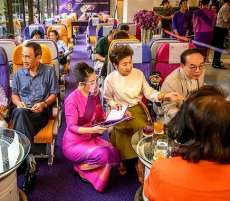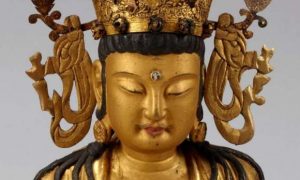In my recent article “Modern Buddhism and its Cultural Translations: Reflections from a Qualitative Case Study of Two European Zen Monks,” published in the peer-reviewed scientific journal Arxiu d’Etnografia de Catalunya, I proposed to understand modern Buddhism by employing a psychological and cultural approach. To this end, I looked at the life histories of two European Zen monks.
The first is the Catalonian monk Lluís Nansen Salas; Nansen is his ordination name, which means “sage of the south.” He was born in Barcelona in 1965. Since childhood, Lluís Nansen had felt disenchanted with both Catholicism and the Western social lifestyle and its values. This disenchantment made him seek non-Western alternative practices and worldviews, such as yoga and aikido. During adolescence, he read Alan Watts, Herman Hesse, Taisen Deshimaru, and others. Finally, he began to practice zazen in 1991, at a center in Barcelona. Initially, Lluís Nansen was interested in Buddhist practice, with little interest in its philosophy and beliefs. As the years went by, and his commitment to meditation became stronger, he started to study the Dharma with progressively greater interest.
Lluís Nansen highlights the intensification of the practice for his personal development. It helped him to reach a higher awareness of his daily emotions, worries, and behaviors. There are also two personal moments that Lluís Nansen describes as important for strengthening his practice: the birth of his two sons in 1992 and 1995. These two events made him feel an increased concern about the reality of life and death. The idea of impermanence encouraged him to go a step further into his commitment with the practice of Zen. Thus, in 1995, he decided to be ordained as a monk.
In 2008, Lluís Nansen established his own centre, the Dojo Zen Barcelona Kannon. The center started with a few participants, and today has more than 200 registered members. In 2016, Lluís Nansen received a Dharma transmission (shihō) from the monk Roland Yuno Rech. Besides his studies as a Buddhist monk, Lluís Nansen has a degree in theoretical physics from the Universitat Autònoma de Barcelona. In his lessons, books, and seminars, he combines his scientific background with his Buddhist expertise. For example, he analyses the idea of karma in terms of psychological conditioning. He also explains the ideas of “suffering” and “desire” using the concept of “intention.” According to the Catalan monk, the practice of zazen helps us move beyond the intentionality of our ordinary mind and our psychological conditionings and behaviors. Through zazen, we can reach—at least for a moment—our “original mind,” a state of non-intention and emptiness.
The second case I examined is that of the German monk Jens Olaf Christian Muhō Nölke, who at the time of the study was the abbot of the Sōtō Zen Monastery Antaiji, in northern Hyōgo, Japan. Muhō is his Buddhist name, which means “without direction.” Muhō was born in Berlin in 1968, and was raised in an old church where his grandfather was a minister. After the death of his mother, Muhō became increasingly skeptical of the Christian background in which he was educated. He also started to question the meaning of “playing the game” dictated by the modern Western materialistic way of life. Like Lluís Nansen, Muhō experienced a disenchantment with the cultural emancipatory models of Western culture.
When he was 16 years old, Muhō met a secondary-school teacher who led a Christian Zen meditation group. Initially, he was skeptical about participating, but he finally decided to give it a try and practiced meditation. During his initial sessions, he experienced sensations usually ignored by his ordinary state of mind. Muhō explains how meditation produced a reduction of rumination as well as greater focus on the body and the surrounding sensations. The whole process produced a state of mind that opened Muhō to a new path of understanding. Also like Lluís Nansen, Muhō started the practice of zazen with scarce knowledge of Buddhist doctrine. He was focused on the practice itself and not on the beliefs and worldviews attached to it.
A year later, the teacher of the Christian Zen group resigned his leadership and Muhō decided to fill the new vacancy. In this new situation, Muhō realized that he should study Buddhist history and ideas so that he could fulfill this new role properly. He read about Prince Siddhartha, and how he renounced his wealthy life to follow the path to enlightenment. Muhō felt strongly attracted to and identified with the story of the Buddha. This led to his decision to pursue a degree in Japanese studies at Berlin University. In his master’s degree dissertation, he wrote a philosophical comparative analysis of the works of Eihei Dōgen, Ludwig Wittgenstein, and Martin Heidegger. To collect a bibliography for his dissertation, Muhō spent a few months at Kyoto University. There, he heard about a monastery in the mountains of Hyogo where “true Zen” was practiced. The monastery is Antai-ji, founded in 1921 for the practice of zazen and the study of Dōgen’s Shōbōgenzō. The monastery had renowned Zen monks as abbots including Sawaki Kōdō and Uchiyama Kōshō.

After his stay at Antai-ji, Muhō returned to Berlin to submit his dissertation, obtaining his master’s degree in 1992. Later, he decided to return to Kyoto to continue with his studies and with Zen practice. He enrolled in a doctorate course that he never completed, instead becoming ordained as a monk at Antai-ji. In 1999, he received the Dharma transmission from the abbot of the monastery at that time, Miyaura Shinyū. In 2002, the aforementioned abbot died, and Muhō was elected as the ninth abbot of Antai-ji. He was the first non-Japanese monk to occupy this position. Recently, he was succeeded by Nakamura Ekō, the first woman to hold the position at Antai-ji.
In his writings and teachings, Muhō combines his academic and Buddhist background in a pragmatic and philosophical style. Like Lluís Nansen, he interprets the idea of karma from a secularised perspective. He considers it a traditional way of expressing how psychological conditionings and compulsions affect people’s daily lives. According to Muhō, the practice of zazen helps us to go beyond an ego-centred karmic mentality, and to connect with the enlightened mind. He names this path “adult practice,” which includes not only the practice of meditation, but also the monastic daily life activities at Antai-ji.
Comparing the lives of both monks, we can observe similar patterns in their deepening involvement in Buddhism. For example, both monks began their practice after a strong disenchantment with Christianity and the modern materialistic lifestyle. This is a common trend in post-modern spiritual seekers, who usually delve into different spiritual paths after finding the one they think is most suitable for them. In some cases, spiritual seekers find the right path for their psychological and existential needs in Buddhism. This occurs in part because of the philosophical and cosmological aspects of Buddhism . However, in the stories presented here, the most attractive feature of Buddhism seems to be meditation as a bodily and mental practice. This should not be surprising, if we consider the centrality of meditation in modern Buddhism.
The process of conversion to Buddhism is not passive. On the contrary, each practitioner adapts, redefines, and translates Buddhist ideas, practices, and values according to her or his necessities, motivations, interests, personality, education, and cultural background. In the instances of Lluís Nansen and Muhō, we can observe processes of cultural translation in which Buddhist ideas are interpreted using scientific and secular terms. Although this is a common trend in modern Buddhism, here we see that it was also influenced by the academic backgrounds of both monks.
Family history also plays a major role in the conversion process. For example, some unique features can be observed in both monks, especially in some turning points of their life histories. For Lluís Nansen, the birth of his sons made him reflect on the phenomenon of impermanence, leading to a stronger commitment to the practice. In the case of Muhō, his awareness of impermanence was related to the early death of his mother. This was a turning point in his life, which drove him to seek new existential meanings and spiritual practices. Birth and death are central topics in Buddhism, so their relevance is not rare in the process of conversion of the two monks discussed here. But they are also universal problems of our species, which no culture can avoid.
See more
El budisme modern i les seves traduccions culturals. Reflexions a partir d’un estudi qualitatiu de casos amb dos monjos zen europeus (Arxiu D’Etnografia De Catalunya)
Budismo Moderno (Buddhistdoor en Español)
Antaiji Monastery
Zen Kannon Barcelona Centre
Related features from BDG
Zen in the “Athens of Cuba”
Interview with Montse Castellà Olivé, President of Sakyadhita Spain
Spain Hosts Conference of the European Buddhist Union
Within Chaos, There Is a Refuge for Meditation
Introducing the Buddhist Retreat Center Arya Tara, Madrid

















